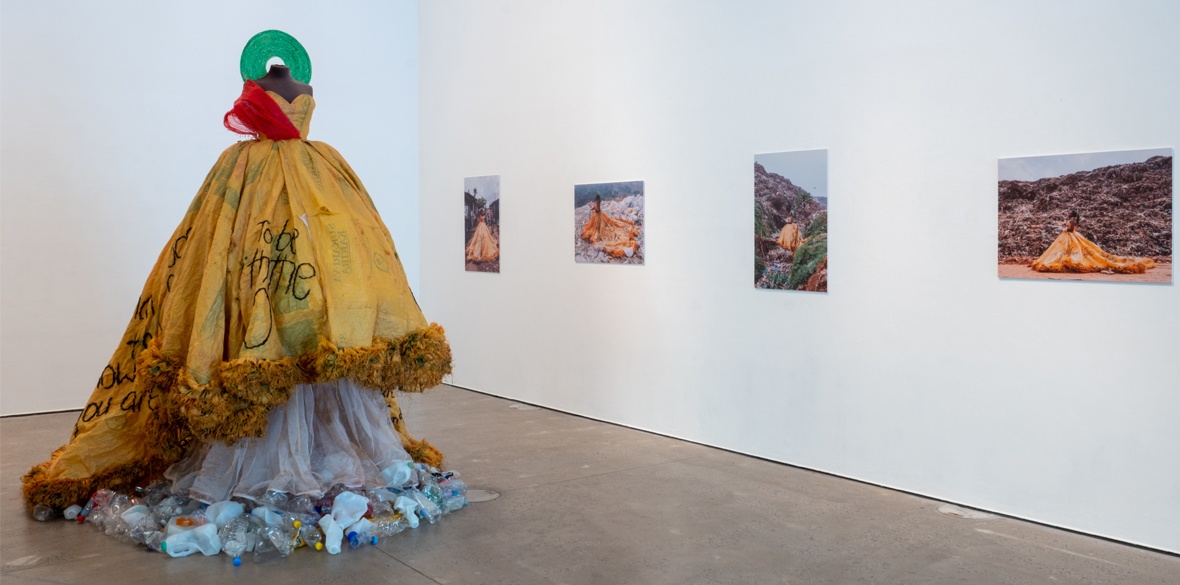This is the last article you can read this month
You can read more article this month
You can read more articles this month
Sorry your limit is up for this month
Reset on:
Please help support the Morning Star by subscribing here
Liverpool Biennial 2023
NOW in its 25th year, the Liverpool Biennial is the UK’s largest free festival of contemporary art. Curated by Khanyisile Mbongwa, this year’s theme is uMoya — The Sacred Return of Things. In the isiZulu language, uMoya means spirit, air, breath, climate, wind — all elements representing the fleeting and transient, the elusive and intangible.
The Biennial addresses Liverpool’s turbulent history, a city that in the 19th century was one of the world’s richest, its wealth mainly coming from slavery and exploitation.
Thirty five artists, in 15 different indoor or outdoor venues across the city, examine colonial histories and legacies, ancestral and indigenous forms of knowledge and wisdom, and predict the possibility of a joyful future despite past and present catastrophes.
What better place to start my tour than the Open Eye Gallery close to the iconic three graces, where, upon entering, I immediately faced a torso wearing a wedding dress embroidered with outspoken messages. Originally designed as a performance piece that re-enacted the 1962 Ugandan Independence ceremony as a wedding, artist Sandra Suubi’s “Samba Gown” is a statement of resistance, a metaphor for that day when the bride, Uganda, entered a binding contract with the groom, her former colonisers.
On display too are Suubi’s amazing photographs that document the wearing of the gown (itself created from discarded plastic) in various rubbish dumps in Kampala. Uganda receives thousands of tonnes of plastic waste exported every year from wealthy nations.
The artist interprets this as the aftermath of colonialism, an example of the transactional relationships existing between former colonies and their colonisers.
Artist David Aguacheiro’s photographic installation continues this theme, focusing on the exploitative practices of the West in Mozambique, people stripped of their clothes, dignity, identity, along with the natural resources.
My next stop was St Nicholas Church Gardens, in whose grounds, Abell, Liverpool’s first recorded black resident and former slave, is buried. Alongside the Scousers seated on wooden picnic benches stand seven new clay sculptures by Ranti Bam, titled Ifa, which in Yoruba means “to pull close”. The Stools, known as Akpoti, are an important element in indigenous life, used for care, rest, contact, communal gathering and seek to promote relaxation, calmness and love.
Entering Liverpool 1 from the Dock Road, I faced a large, colourful installation newly created by Rudy Loewe, The Reckoning, based on a former painting featuring mask-wearing carnival goers coming to the aid of Black Power revolution in Trinidad and Tobago. Rudy Loewe has shifted the participants to Liverpool’s old docks where they now confront the city’s colonial legacy and its present-day resonances.
Other outdoor locations include St John’s Gardens, overlooked by municipal buildings, museum, library, art gallery, that were themselves the vanity projects of Victorian millionaires. In these surroundings, Nicholas Galanin has created seven overturned baskets in cast bronze, standing on plinths, adjusted to resemble the masks of burglars and the theft of cultural property. Given such baskets are used by the indigenous people of Africa and North America, the hope is one day a return of that which has been stolen from people who were either silenced or erased.
Time for coffee in The Bluecoat, Liverpool’s oldest city centre building, a school founded during Britain’s colonial period by the Anglican Church and Liverpool Merchants, most of the latter deriving their wealth from slavery and the trade in goods this enabled — sugar, cotton and tobacco.
Four Biennial artists have works that invite us to think about how experiments in creativity may result in different foundations from which to imagine ideas for a better future. In Gallery 2, artist Raisa Kabir invites us to gather our spools and let our hair down. Entitled Utterances, there’s crafts such as tapestry, hand weaving, hand looms, raw materials, plus we can watch Kabir’s videos relating to the theme of the exhibits.
You can enjoy immersive video installations at many of the Biennial venues.
All 35 artists have responded to uMoya in strikingly different ways and imaginative ways. Our fossil-fuel based global economy, rooted in colonial expansion, continues to destroy indigenous eco-systems, people’s homes and the land. In this thought-provoking festival we witness through art, both past and present, but are given the hope of repair and healing.
Come walk the streets of Liverpool and view all or most of this remarkable collection of contemporary creativity that both confirms our colonial past and explores how we may find redemption from the horrors of history, a genuine plea for positive change.
It is enjoyable to see and will get you thinking. Well worth a visit.
The Biennial runs until September 17, info: biennial.com











